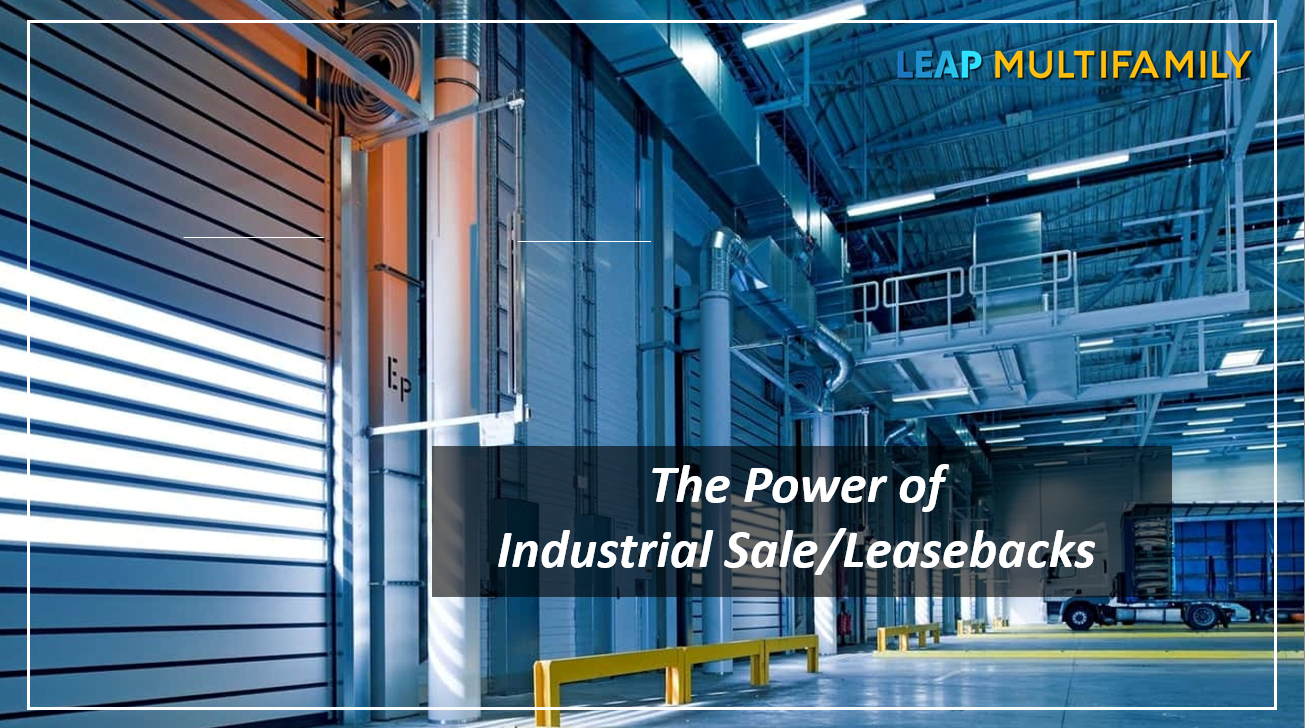Part 1: The Power of Industrial Sale-Leasebacks as an Investment Strategy
Companies often face the
challenge of balancing the need for capital with their commitment to
operational stability. One financial strategy that’s gaining traction is the
industrial sale-leaseback, a transaction that allows companies to access cash
tied up in real estate assets while maintaining their core operations. But what
exactly is an industrial sale-leaseback, and how can it benefit businesses and
real estate investors like us?
What is an Industrial
Sale-Leaseback?
Simply put, an industrial
sale-leaseback is a financial transaction in which a company sells its property
to a third-party investor and then immediately leases the property back from
the buyer. This allows the company to continue using the property for its
operations while freeing up a significant amount of capital that was previously
locked into real estate assets. This
allows the company to expand operations, pay down debt, or expand its balance
sheet.
As the real estate
investor, we like these deals because an already-strong tenant becomes even more
credit-worthy after receiving the cash. Tenants typically sign a 15-20
year triple net lease with 2-3% yearly increases. Triple net leases mean the
tenant pays for all expenses so the increases in income go 100% to our Net
Operating Income bottom line.
How Does it Work?
The process usually follows
these key steps:
Property Sale: The company, as the seller, identifies an investor
interested in acquiring its industrial property. This investor is often a real
estate investment firm or a private equity group.
Credit Check: This part is very important and it may take 60-90
days for the operator’s credit team to complete. See Part 2 below.
Sale Agreement: The seller and investor negotiate the terms of the
sale, including the purchase price and leaseback agreement. This leaseback
typically includes a long-term lease with fixed rent payments.
Closing: Once the sale agreement is finalized, the property
sale closes, and the seller receives the sale proceeds, which can be used to
bolster working capital, invest in growth initiatives, or pay down debt.
Leaseback: Following the sale, the seller enters into a lease
agreement with the investor, allowing the business to continue using the
property for its operations. This ensures minimal disruption to day-to-day
activities.
The Benefits of Industrial
Sale-Leasebacks
Now, let’s explore the
advantages of an industrial sale-leaseback for us, the investors:
Unlocking Capital: The biggest benefit for our new tenant is the
immediate infusion of capital into the business. By selling the property, our
tenants gain access to funds that can be reinvested in their core operations,
expansion, or paying down debt. This improves their financial stability and
decreases their risk as tenant. A less risky tenant makes a more valuable
transaction for us.
Improved Liquidity: Sale-leaseback arrangements improve a our tenant’s
liquidity without impacting its credit rating or debt load. It’s a powerful
tool for companies looking to enhance their financial flexibility.
Tax Efficiency: Separating the real estate from the business is tax
efficient for both parties. Lease payments are typically tax-deductible for our
tenant, and the property brings depreciation benefits for us, the investors.
Operational Continuity: With a leaseback arrangement, businesses can maintain
their operations in the same location, ensuring minimal disruption to their
employees, customers, and supply chain.
Conclusion
Industrial sale-leasebacks
offer a win-win solution for businesses seeking to unlock capital and investors
looking for stable, long-term real estate assets.
Part 2: Underwriting a Tenant’s Credit Worthiness
When an investor is
considering a sale-leaseback transaction with a tenant, it’s essential to
assess the tenant’s credit quality to evaluate the risk associated with the
investment. We want to be able to exit the property with a profit and our future
buyer will pay more if our tenant’s business is thriving. Here are the steps an
investor typically takes to check the tenant’s credit quality.
Examine Business Strength: The investor evaluates the tenant’s business model,
industry, and competitive position. They assess the strength of the tenant’s
market presence and the potential for future growth or decline in the tenant’s
industry.
Request Financial
Documentation: The first step is to
request the tenant to provide comprehensive financial statements. This may
include audited financial statements, income statements, balance sheets, and
cash flow statements for the past few years. This documentation will help the
investor understand the tenant’s financial health and performance.
Review Personal Credit
Reports: The investor may obtain
personal credit reports on the tenant’s principals from credit reporting
agencies such as Equifax, Experian, or TransUnion. These reports provide
information about the tenant’s credit history, outstanding debts, payment
history, and any negative marks, such as late payments or defaults.
Consider the Tenant’s
Business Credit Rating: The investor
may check the tenant’s credit rating from credit rating agencies like Standard
& Poor’s, Moody’s, or Fitch Ratings. These ratings provide an independent
assessment of the tenant’s creditworthiness and can be an important reference
point.
Analyze Lease Terms: The investor carefully reviews the terms of the lease
agreement. We assess the lease duration, rental rate, rent escalation clauses,
and any provisions related to rent payment guarantees or collateral. In many
cases the principals of the business provide personal guarantees on the lease
payments.
Assess Lease Payment
History: The investor may inquire
about the tenant’s historical lease payment performance. They will want to know
if the tenant has consistently paid rent on time and if there have been any issues
with late or missed payments.
Examining the tenant’s
credit quality is a crucial step in the due diligence process for an industrial
sale-leaseback transaction. It helps the investor make an informed decision
about the investment’s risk and potential return. Our goal is to ensure that
the tenant has the financial capacity to meet its lease obligations.

